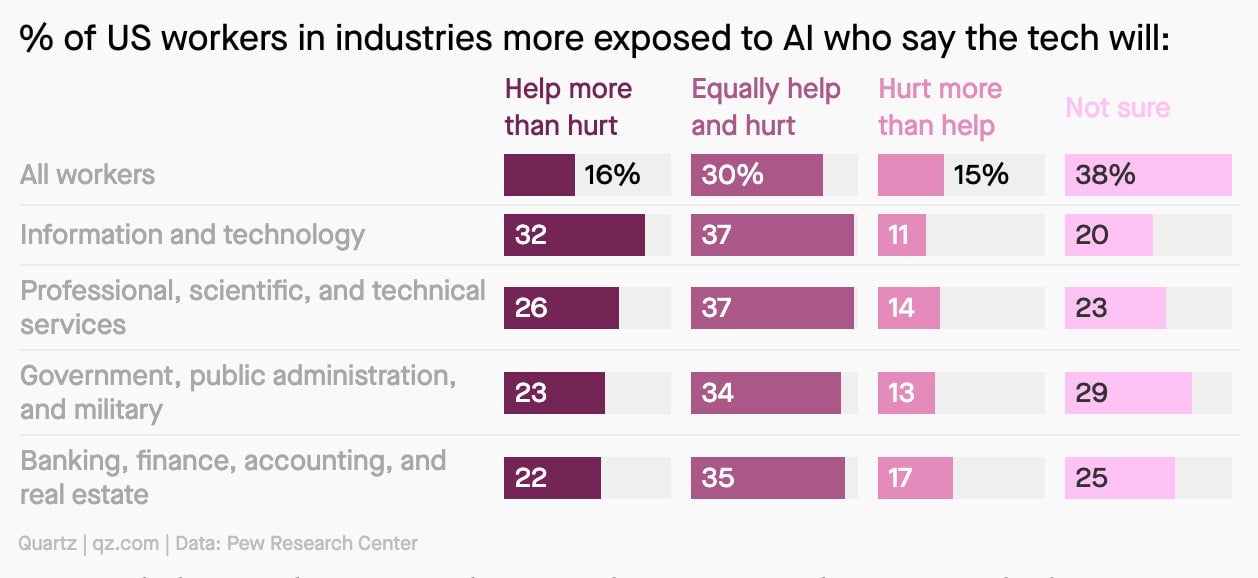Throwing it in reverse
Plus: Fits of freudenfreude and ignoring weekend emails this week in The Memo.

Hello, Quartz at Work readers!
Diversity, equity, and inclusion (or DEI) leaders are under threat. This June, at least six DEI executives left their roles at entertainment companies like Disney and Netflix. In tech, Pinterest had three diversity leads in four years; Apple has had four since 2017. In fact, since 2018, the average tenure of DEI roles in the S&P 500 has been less than two years.
“As a former head of people, I’ve often been tasked with overseeing diversity initiatives and have seen firsthand the pressures on those leading the way forward,” Quartz at Work’s Anna Oakes writes. Now the pressures have come to a head: We’re watching a mass exodus among DEI practitioners in leadership roles, along with a wider reversal on inclusion initiatives in the workplace.
Compare today’s reality to the promises of just three years ago. Following the death of George Floyd in the spring of 2020—and the forward charge of social justice activism that accompanied it—companies made loud pledges to advance diversity and equity in their work.
But those businesses are now quietly dropping those commitments. One factor: An old-fashioned focus on finances over newer priorities like inclusion and ESG principles. Fearing a potential recession, leaders have dumped DEI roles and programs to cut costs.
Compounding this is the US Supreme Court’s strikedown of affirmative action this spring. While the ruling doesn’t apply to corporate diversity initiatives, many organizations are pulling back on their inclusion programs for fear of legal consequences. It’s the preemptive—and alarmist—corporate backtracking that DEI advocates have warned against.
It shouldn’t be this easy for companies to walk back their DEI commitments, Oakes writes—and yet we’re watching them reverse in real time.
But for those who want to protect diversity and inclusion at work, what comes next? Quartz outlines the practices your workplace should be persevering with instead.
WAGE AGAINST THE MACHINE
1.5x: How much more likely it is that women will lose their jobs to AI than men by 2030. That’s according to a new projection from the McKinsey Global Institute, which also suggests that nearly a third of US working hours could be automated by the end of the decade.
The gender disparity is because women make up a larger share of low-wage workers, whose industries the consulting group expects to shrink in the age of artificial intelligence.
“The revolution may not be televised, but it will be automated,” Quartz’s Gabriela Riccardi writes. And it’s not coming for everyone’s jobs equally. Thankfully, there are ways to make sure lower-paid workers aren’t left behind.
HERE’S WHO’S FEELING THE AI OPTIMISM
If low-paying work is more likely to be replaced by AI, high-paying work is more likely to be made easier by it. That’s what the Pew Research Center suggests in a report that finds a different divide—this time in how people expect AI to change their work.
About a fifth of all US workers have a high exposure—or in translation, do work that can be performed by technology—to artificial intelligence. And those in jobs most exposed to AI, usually high-paying ones, are also most likely to say the technology will help them more than hurt them.

After the release of generative AI tools like ChatGPT and Dall-E last year, AI fever has swept the white-collar world. And it’s white-collar workers, too, who are optimistic about how AI will boost them on the job. Quartz’s Michelle Cheng explains what’s behind their confidence.
FREUDEN, NOT SCHADEN
Freudenfreude (n.): The act of finding pleasure in someone else’s good fortune—or a solid tactic for getting teams to feel excited, not jealous, when someone earns a win.
✋ Workplace envy, when left unmitigated, can quickly sour team culture. That’s why Quartz contributor Aytekin Tank suggests starting practices that help everyone feel satisfied when one person succeeds.
One idea: Weekly demo days, where teammates show off the progress of the projects they’ve been working on. “Everyone takes these demo days as an opportunity to give positive feedback and support to their colleagues,” Tank writes. The result? A strong sense of camaraderie, enduring esprit de corps, and teammates that actually cheer each other on.
YOUR WEEKLY WORK HACK
Researchers now know when the best time to send an email is—and good managers should completely ignore it. A new report analyzes 8.7 million internal emails to determine the best time to send messages. And you should steer clear of its advice, writes Quartz at Work’s Anna Oakes.
📫 The time: Sundays between 3pm and 6pm eastern time, which doesn’t track with commitments to respect work-life balance. If your company is struggling to get communication to stick, it’s time for new strategies. Quartz has a few suggestions.
YOU GOT THE MEMO
Send questions, comments, and stories of schaden/freudenfreude to [email protected]. This edition of The Memo was produced by Gabriela Riccardi.